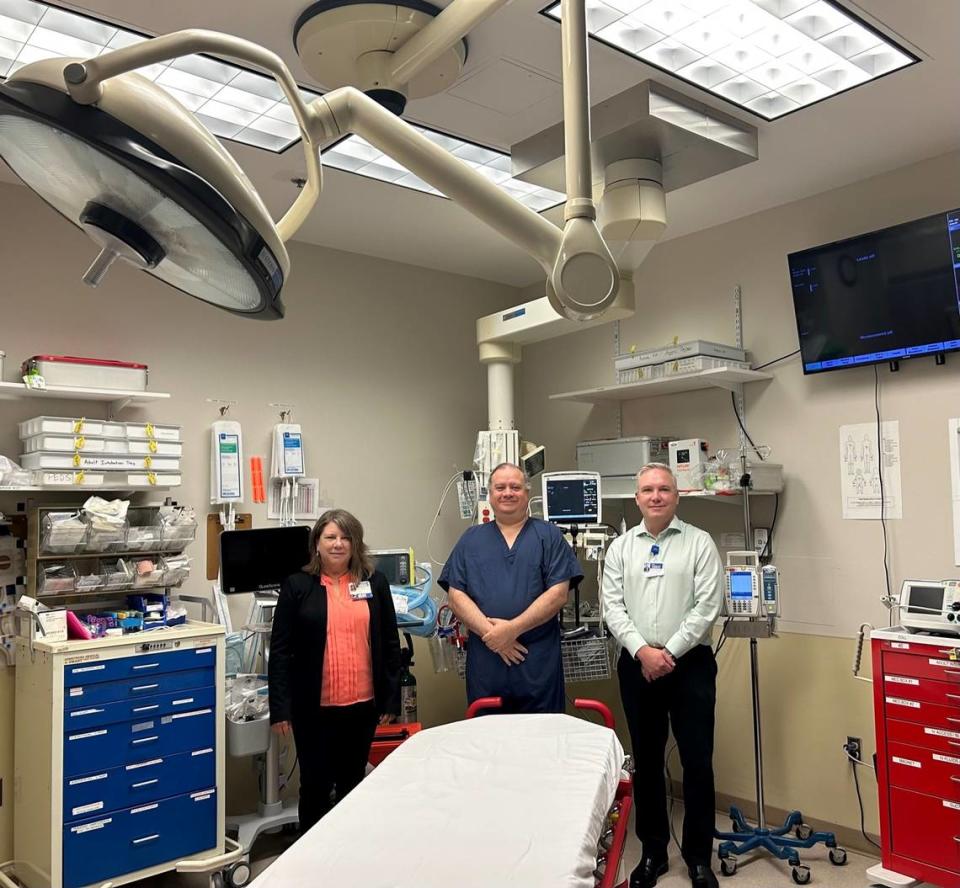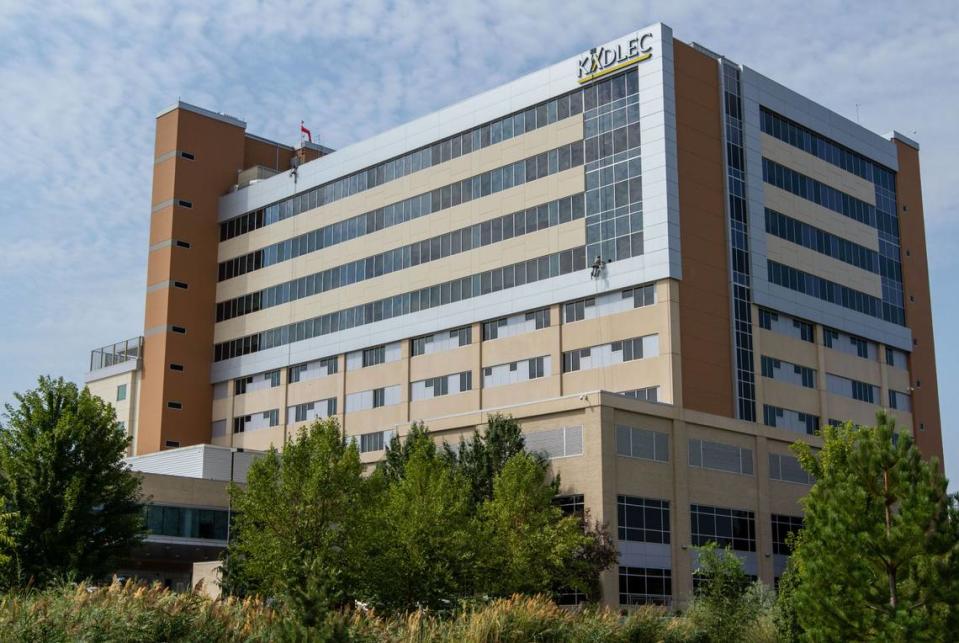This part of Eastern WA no longer a ‘trauma desert.’ Severely injured to get quicker care
More severely injured people in the Tri-Cities area will get quicker life-saving help after a Richland hospital became only the second one in Eastern Washington to be designated a trauma level 2 hospital.
“For years we have been living in a trauma desert which means there is not adequate access to high level trauma services for those severely injured patients,” said Dr. Kevin Pieper, chief medical officer for Kadlec Regional Medical Center.
“We get the best outcomes if those patients can receive care within an hour. We call it the golden hour for trauma patients,” he said.
Now, Kadlec has the resources to treat more people severely injured from falls, crashes, shootings and stabbings rather than stabilizing them for a flight to a hospital with more advanced capabilities for trauma treatment.
“This is significant data that shows if a patient receives care during the golden hour, the outcome is better, not just in survival, but in functional recovery” with less chance of long-term disabilities, said Dr. Eduardo Smith Singares, medical director of trauma and emergency surgical services at Kadlec.
“We will be able to provide this care in a more urgent fashion,” he said.
The need to get patients not just to the closest hospital, but the closest hospital providing the appropriate level of care, is the principle behind Washington State’s Trauma System, which since 1990 had given hospitals ratings from 5 up to 1, with Level 1 for the most complex cases.
The Washington state Department of Health recently named Kadlec a level 2 trauma center, but Kadlec has been on a test run for the higher level care for the past year.
Providence Sacred Heart Medical Center and Children’s Hospital has the only other level 2 trauma center in Eastern Washington, with other level 2 centers along the Interstate 5 corridor.
Kadlec has been able to treat about 200 patients who otherwise would have be flown to a higher level trauma center.
Not only did that allow for care to start sooner, but it saved them the costs of an air ambulance flight. It also allowed families to provide support, without the time and expense of traveling and staying outside the Tri-Cities area.

Kadlec still will need to stabilize and transport the most complex trauma patients to a level 1 trauma center, usually Harborview Medical Center in Seattle. It is the state’s only level 1 trauma center.
Providence Sacred Heart Medical Center and Children’s Hospital in Spokane has the only other level 2 trauma center in Eastern Washington.
Kadlec will continue to serve as a level 3 trauma center for children, the only hospital in the Tri-Cities with that level of pediatric trauma care.
Trios Health in Kennewick has a level 3 trauma center designation for adults, and Lourdes Medical Center in Pasco and Prosser Memorial Hospital are level 4 trauma centers.
Kadlec work toward trauma 2
Kadlec has been working toward the higher trauma level designation for adults for more than a decade, said Smith Singares.
Twenty years ago its designation dropped from level 2 to level 3, with Kadlec officials saying at the time that they no longer had enough neurosurgeons to have them available around the clock to maintain the level 2 rating.

But in the decades since, the Tri-Cities population has grown, and the area is better able to support enhanced medical services and also has more trauma patients needing immediate treatment.
Kadlec has worked to assemble teams of advanced specialists, including neurosurgeons, orthopedic surgeons, trauma surgeons and cardiothoracic surgeons, improving care available for not just trauma but also other patients.
“Because of the required specialities, a trauma designation takes many years to build,” said Rebecca Hammons, Kadlec trauma program manager. “Having all these specialities available for lifesaving care is going to save lives.”
Building the level 2 trauma center also has required work from staff across the hospital, including nursing, imaging and laboratory employees, Hammons said.
Level 2 trauma centers may also have responsibilities in the region for education, system leadership and disaster planning.
Kadlec officials expects that now that it is officially a level 2 center, the number of severely injured patients it treats will increase beyond the 200 additional patients it provided care for over the last year.
The hospital likely will see more patients from around Eastern Washington and also from across the Oregon state line.
The largest number of trauma patients Kadlec treats are people who have fallen, including people who have fallen from heights and elderly people who fall at ground level.
That is followed by vehicle crashes and then penetrating wounds, such as shootings and stabbings.

